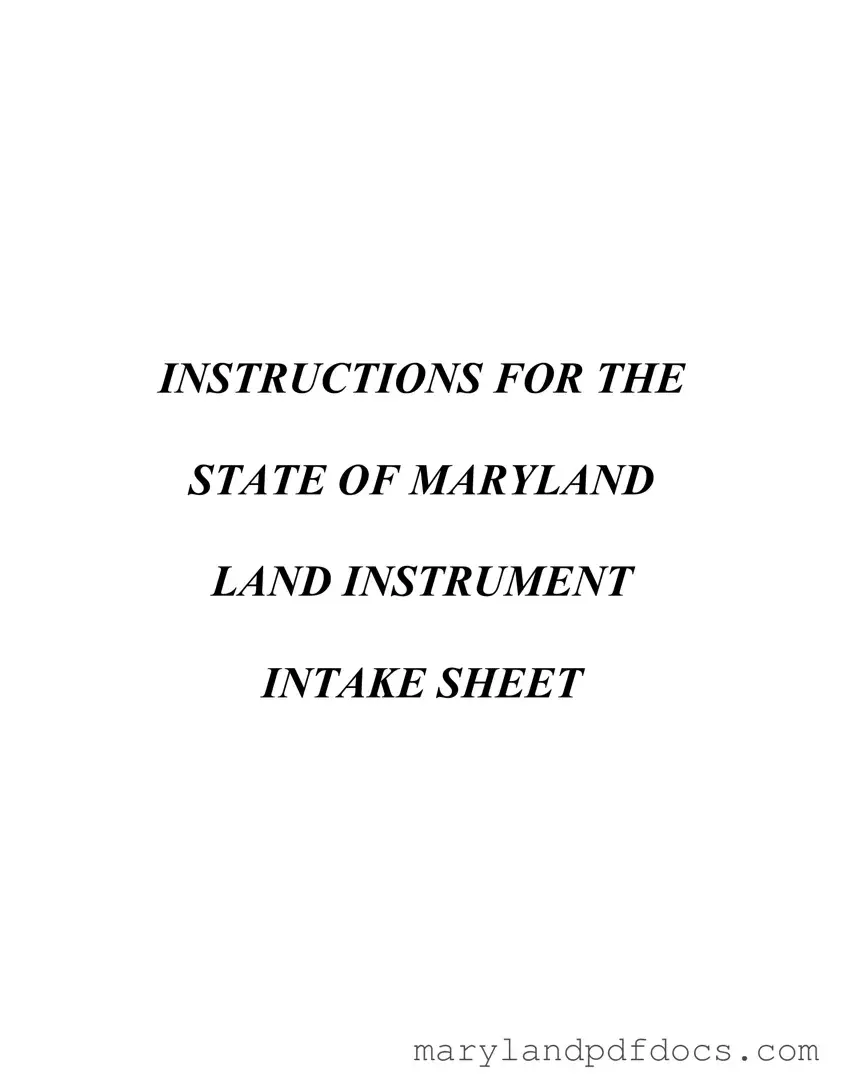What is the purpose of the Maryland Intake Sheet?
The Maryland Intake Sheet serves as a standardized form utilized by all twenty-four circuit court clerk offices in the state. Its primary purpose is to streamline the processing, recording, and indexing of land instruments. Additionally, it meets the information requirements of the Maryland Department of Assessments and Taxation (SDAT) and local finance offices.
Who needs to submit the Intake Sheet?
Any individual or entity submitting a land instrument for recordation in Maryland must complete the Intake Sheet. This requirement applies to most land instruments, excluding releases and assignments of mortgages, deeds of trust, powers of attorney, and financing statements. Sections 1, 3 through 5, and 7 through 10 must be filled out for all required submissions.
What information is needed to complete the Intake Sheet?
The Intake Sheet requires specific information, including the type of instrument being recorded, conveyance type, tax exemptions, consideration and tax calculations, and property descriptions. It is important to print or type the information clearly in black ink. If multiple instruments are submitted, each must be itemized appropriately.
What should be done if multiple instruments are submitted for the same transaction?
If more than two instruments are being submitted for the same transaction, the Addendum to Intake Sheet should be used. This addendum allows for the itemization of relevant information such as grantors, grantees, considerations, recording fees, and taxes. Only one Intake Sheet should be completed per transaction involving the same property.
What is the significance of the property description section?
The property description section is crucial for the accurate transfer of property ownership in assessment records. It allows SDAT to index property identifiers and ensures that all relevant property information is correctly recorded. This section must be completed when submitting a deed and can include various identifiers such as the Property Tax Identification Number and street address.
How are tax exemptions handled on the Intake Sheet?
When applicable, the Intake Sheet allows for the listing of any claimed tax exemptions related to State recordation, State transfer, and county transfer taxes. Each exemption must be briefly explained or cited, providing the necessary authority for the claim. This helps ensure compliance and proper processing of the transaction.
What happens if the Intake Sheet is not completed correctly?
Failure to complete the Intake Sheet accurately may result in the rejection of the submitted instruments. Incorrect calculations or missing information can hinder clerks from verifying charges payable. Therefore, it is essential to follow the preparation instructions carefully and provide all required details to avoid delays.
Can the Intake Sheet be submitted electronically?
The Maryland Intake Sheet must be submitted in hard copy format. If a preparer uses their own computer to print the form, they should ensure that a sufficient number of copies are presented along with the instruments. The completed form must include all necessary signatures and be submitted to the appropriate clerk’s office.
